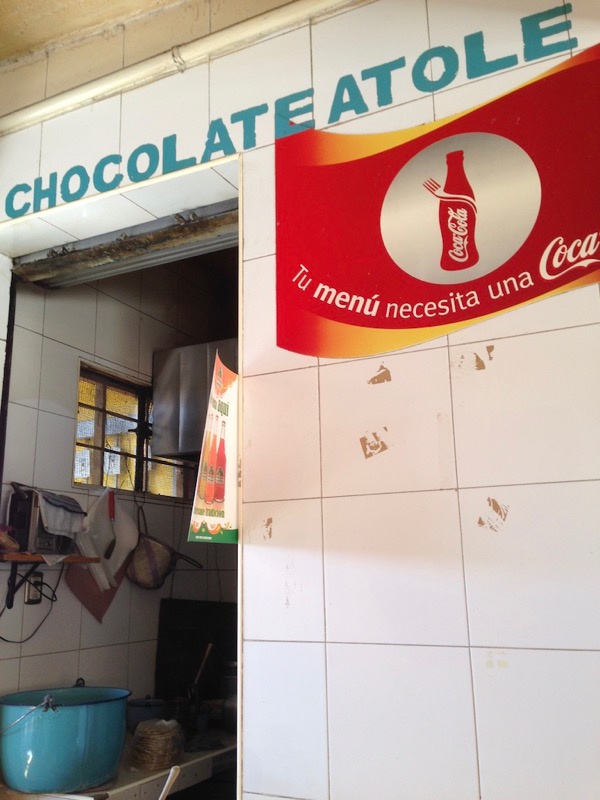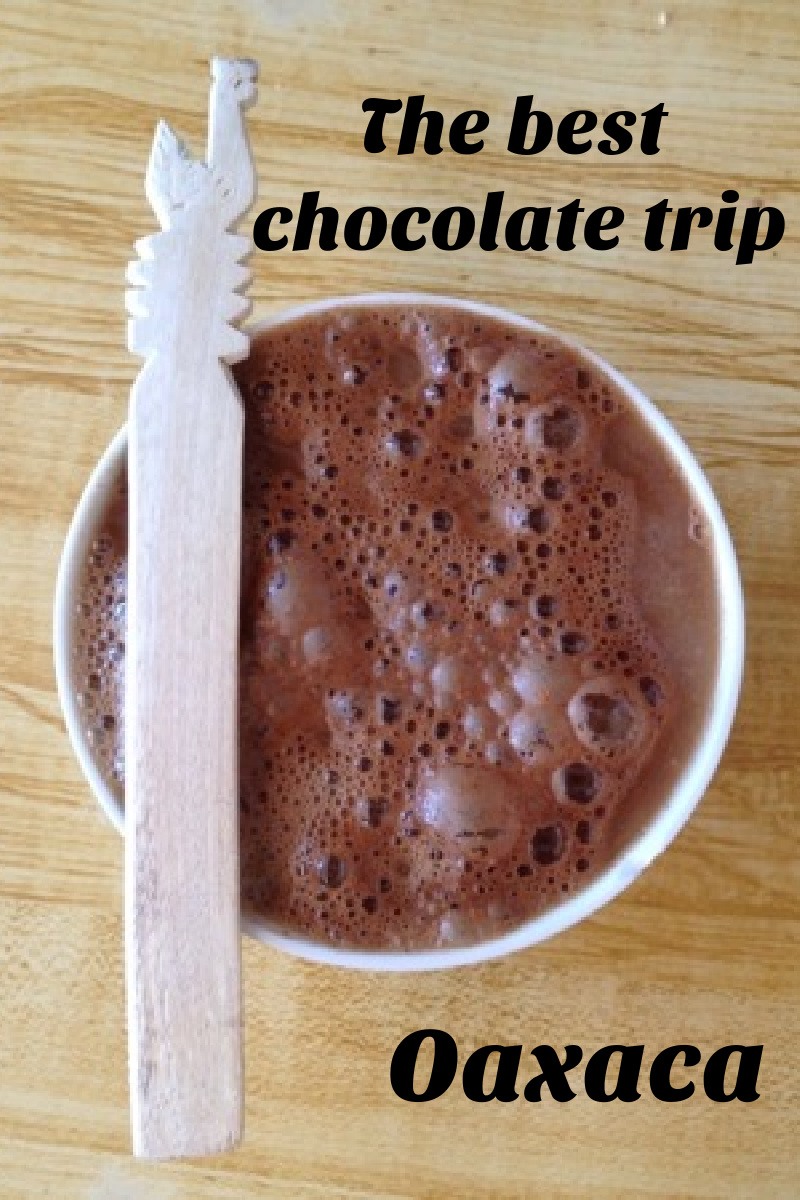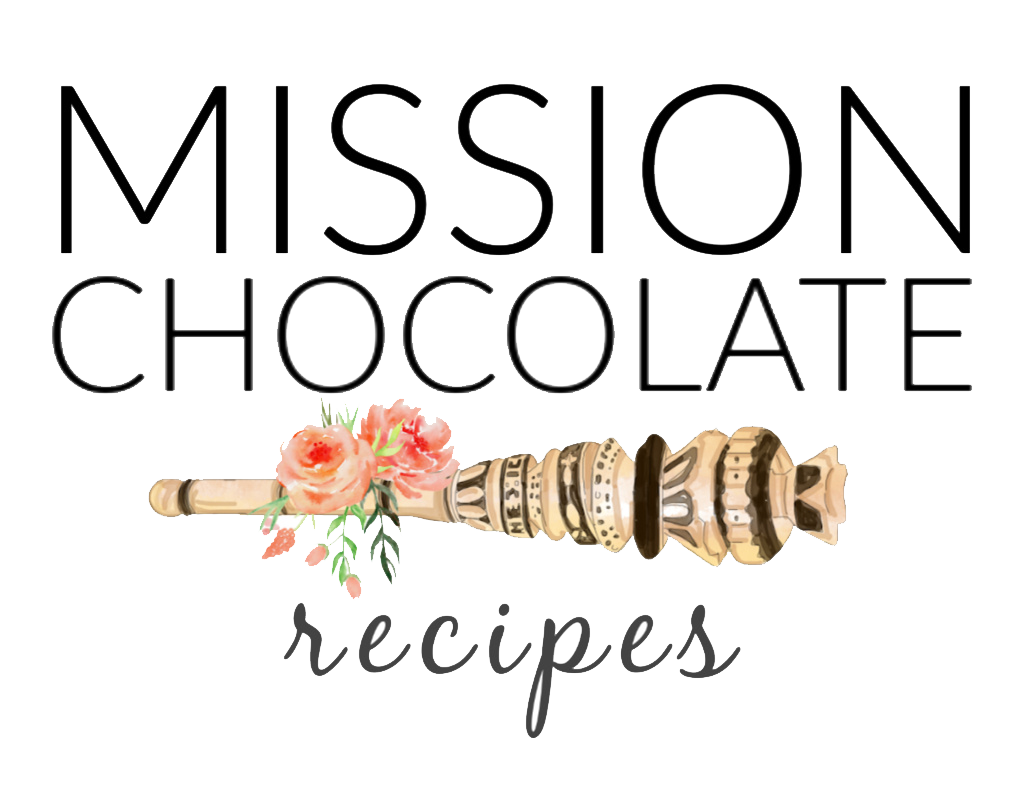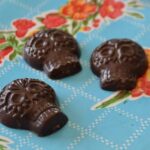The best chocolate trip on earth – Oaxaca
Oaxaca is the only place on earth that has a strong and visible chocolate and cacao consuming culture imbedded in every day life. Indigenous use of cacao and chocolate has been preserved and is cherished and promoted. Here are a few of the chocolate things I consumed and experienced while in Oaxaca, and some tips on how you can do the same.
In the mornings you can go to the outdoor market and see vendors preparing and selling hot chocolate; a basic recipe of ground cacao, sugar, cinnamon, and water/milk. It is ok for you to start your day with this while you wait for the tejate to be made.
About 9am, the women begin to prepare the tejate drink, the cacao drink that is massaged for almost an hour, until it releases a natural whipped cream that is made of cocoa butter. Tejate is one of the most ancient cacao drinks on earth, only few women in Mexico know how to make it and even fewer know how to make it well. It is worth the time to stand there and watch them make the drink. It is also a good idea to try from different vendors because they will all taste different. For a recipe and more on tejate, see my recipe post here.
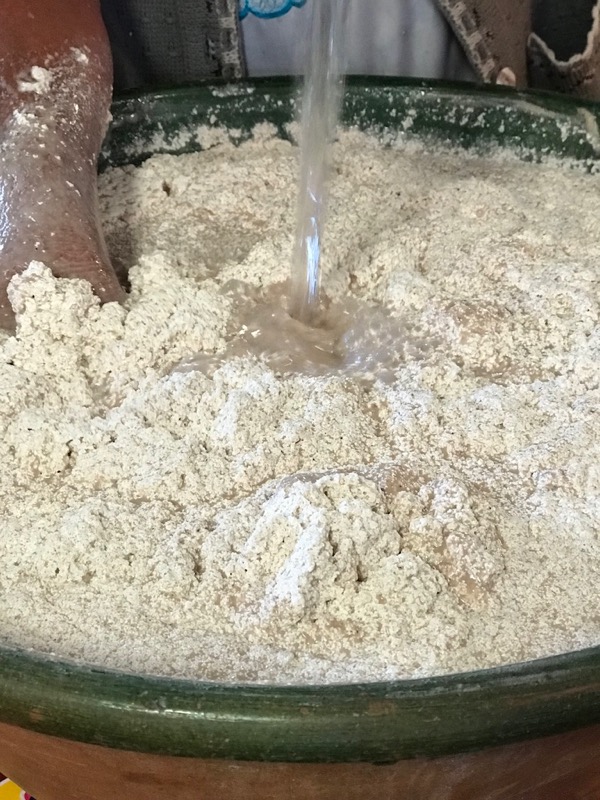
At these same markets, you will see women selling chocolate disks for you to take home to prepare your cup of chocolate, buy as many as you can. When you return from your trip you will never be able to find this quality in drinking chocolate.

Do not ignore the many mills, or molinos, that are busy grinding cacao beans to order, for those that want to make their own disks or mole, a spicy, traditional savory sauce that has chocolate, meant to be placed on chicken or turkey.
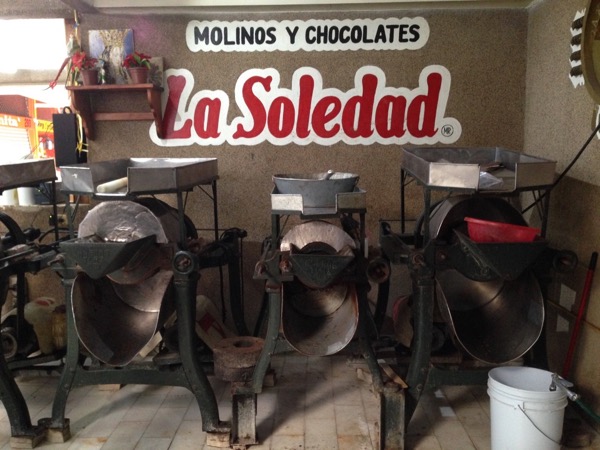
While here you will have the option to buy:
- washed cacao (not fermented, or lavado)
- fermented cacao
- roasted cacao
- balam (cousin to cacao)
- fermented balam
- cacao ground – plain
- cacao ground – with your choice of sugar, cinnamon or almonds

Oaxaca has retained its deep connection with cacao because of its large indigenous communities. Hundreds of years ago in the nearby region to the north, cacao was highly prized by the largest empire of the Americas, the Aztecs. Its value was so grand that you could literally trade a human in exchange for cacao beans.
Although neither Oaxaca nor Mexico are considered large or important producers of cacao and chocolate, they are considered the most important in the preservation of these historical cacao drinking recipes and tools used for these recipes. At these same markets you will be able to buy your metate, a tool used to grind the cacao into a paste, a molinillo, a whisk for mixing water with ground cacao, and a jarra, the container to place the water and chocolate while mixing.
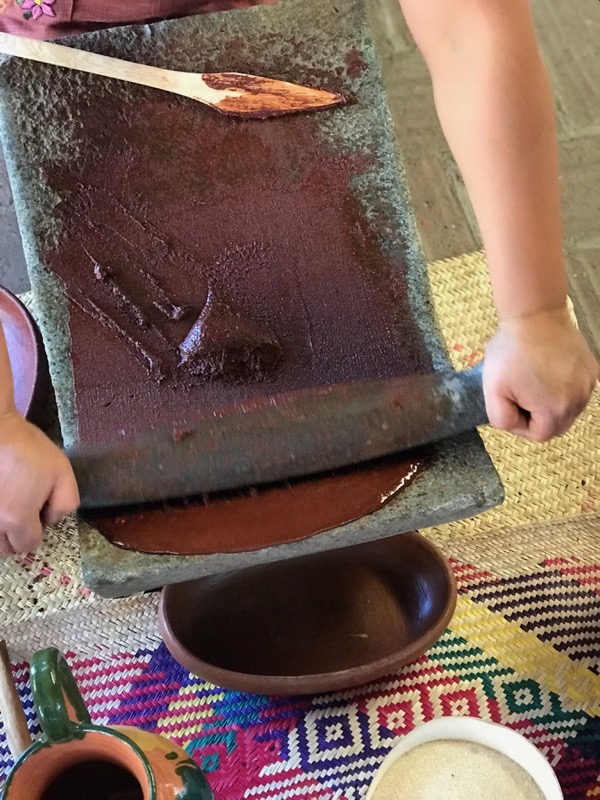
Cacao drinks are plentiful and ubiquitous. To name a few:
- chocolate
- chocolateatole
- tejate
- atole de chocolate (champurrado)
- tascalate
- popo
There are many more but these are the most common that you can find anywhere in Oaxaca. I talk more in depth about these drinks on my other post here.

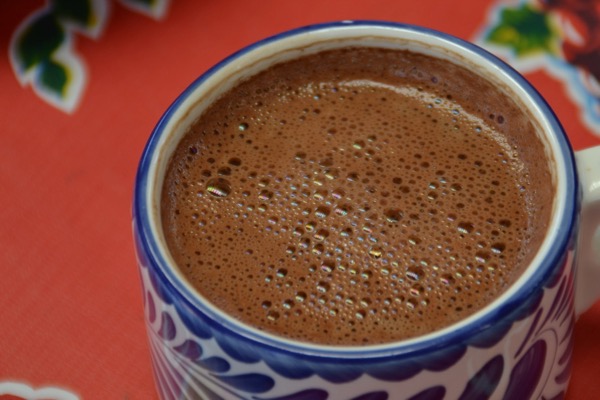
Cacao is part of a daily diet here, not considered a candy or dessert. Children consume it with water for breakfast, others have it as a midday meal or snack, and more importantly it is staple food, for thousands of years, necessary for ceremonies like weddings, births, rights of passage, and funerals.
When the Spanish wrote about the New World they noted how the natives sprang to save “almond like beans” that had fallen from the sacks. To this day each bean continues to be sacred. In the USA I learned how to crack beans using a machine that cracked thousands of beans per minute. When I was in Oaxaca, we peeled each bean one by one with our hands. At first I thought that was crazy and I showed them how to do it faster but now I understand that the amount of care and precision, was part of the ritual.
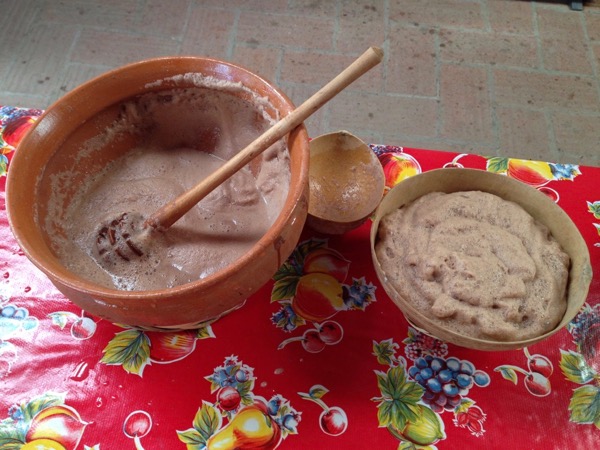
Sitting with women of the indigenous community of Teotitlán del Valle, peeling for hours, gave everyone time to sit and catch up. It was a time to relax, relish, enjoy and just be. In the USA we don’t have time for that, and we would view this as inefficient. But as I grow older and shorter I have come to value the bonding moments that a fast paced life does not allow.
If you are interested in learning how to use a metate and make your own savory chocolate sauce (mole), you can take a course at El Sabor Zapoteco cooking school. Reyna Mendoza has a collection of metates from her aunts, sisters and mother.
When you find yourself in Oaxaca make sure to taste anything that has cacao. You have the morning, noon, and nighttime cacao drinks. Some are hot, warm, or iced. And do not have preconceptions about what they should taste like, they are nothing like the American or European chocolate drinks. Some might not have sugar at all. Be open to new flavors.
There are also a few young people making modern chocolates that are worth the visit: Reina Negra Chocolate and Mama Pacha Chocolate.
And chocolate stores that will grind your cacao beans and also sell chocolate: Chocolate Mayordomo, and Chocolate La Soledad.
You will not have this opportunity in any other state in Mexico and definitely not anywhere outside of Mexico. I have been to every country in Europe and Latin America, that is considered important in the world of chocolate, and nothing comes close to Oaxaca.
If you want to purchase some cacao to take back home, I suggest you go to one of the plentiful molinos like Mayordomo and buy a kilo of peeled, unfermented, roasted cacao. They will grind it for you – it will be liquid when you get it, but over a day it will harden like a rock.
When you get home you can use this as a base to add any other flavors and make any drink. At the molino they will ask if you want cinnamon, almonds, sugar, etc., but I suggest to say no to all additions. You can add all of these things at home. No need to carry this extra weight with you and you have the freedom to create a different chocolate each time you make the drink. There is no real measure; I generally like 20g of ground cacao to 1 cup of milk. But you may like less or more.
If you ground the cacao in Oaxaca you might now have a block of solid chocolate … this is how to make it easier to work with: remelting Mexican Hot Chocolate.
Oaxaca is not the place to find “European” drinking chocolates or chocolate bars. Oaxacan chocolate is pure and unrefined, with recipes that date back thousands of years. European chocolate recipes are about 200 years old, refined to lose a lot of flavor, or worst, masked with many other flavors to hide bad quality cacao.
Oaxaca is a place to find cacao in daily use where you can be given the privilege to see ancient preparation techniques and to taste drinks that were consumed thousands of years ago.
